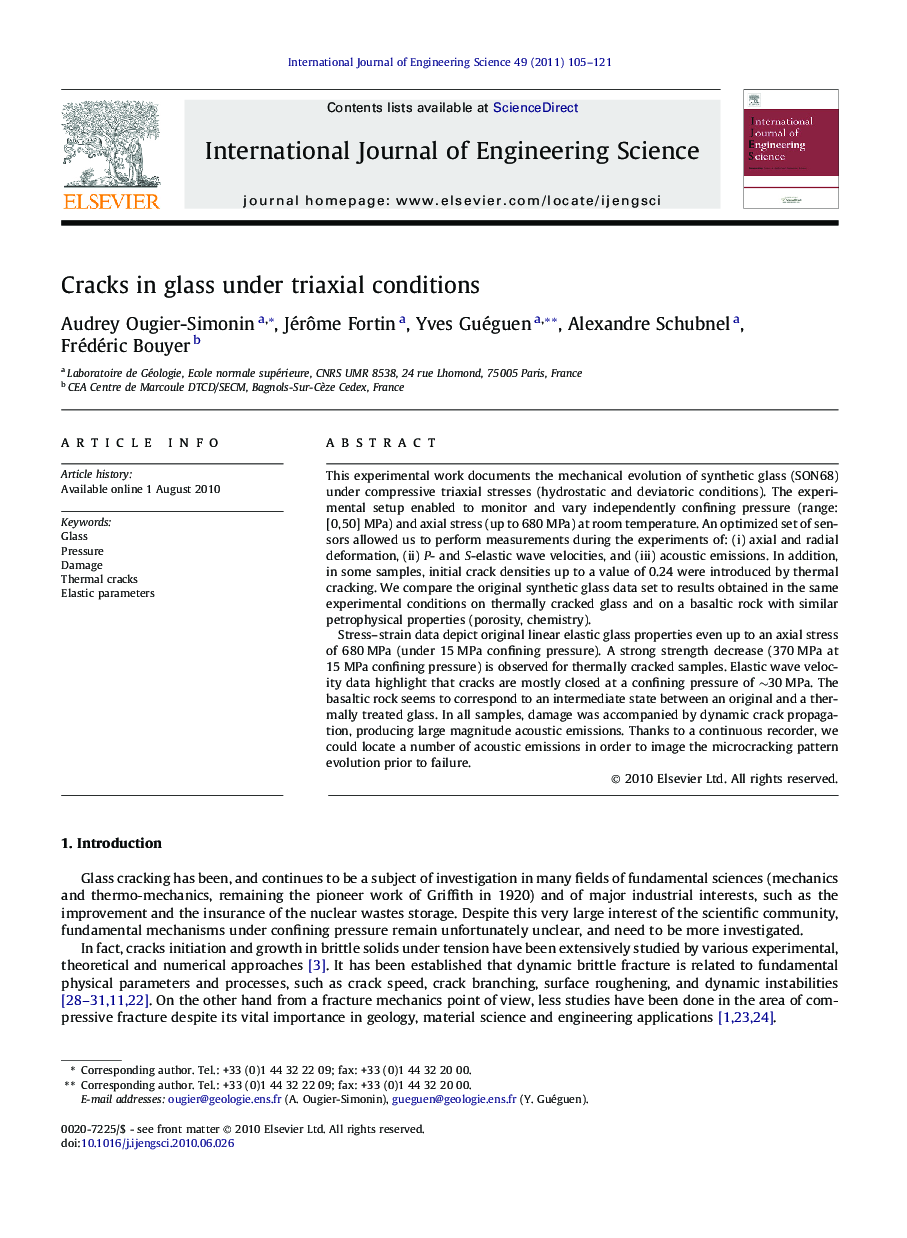| Article ID | Journal | Published Year | Pages | File Type |
|---|---|---|---|---|
| 825577 | International Journal of Engineering Science | 2011 | 17 Pages |
This experimental work documents the mechanical evolution of synthetic glass (SON68) under compressive triaxial stresses (hydrostatic and deviatoric conditions). The experimental setup enabled to monitor and vary independently confining pressure (range: [0, 50] MPa) and axial stress (up to 680 MPa) at room temperature. An optimized set of sensors allowed us to perform measurements during the experiments of: (i) axial and radial deformation, (ii) P- and S-elastic wave velocities, and (iii) acoustic emissions. In addition, in some samples, initial crack densities up to a value of 0.24 were introduced by thermal cracking. We compare the original synthetic glass data set to results obtained in the same experimental conditions on thermally cracked glass and on a basaltic rock with similar petrophysical properties (porosity, chemistry).Stress–strain data depict original linear elastic glass properties even up to an axial stress of 680 MPa (under 15 MPa confining pressure). A strong strength decrease (370 MPa at 15 MPa confining pressure) is observed for thermally cracked samples. Elastic wave velocity data highlight that cracks are mostly closed at a confining pressure of ∼30 MPa. The basaltic rock seems to correspond to an intermediate state between an original and a thermally treated glass. In all samples, damage was accompanied by dynamic crack propagation, producing large magnitude acoustic emissions. Thanks to a continuous recorder, we could locate a number of acoustic emissions in order to image the microcracking pattern evolution prior to failure.
